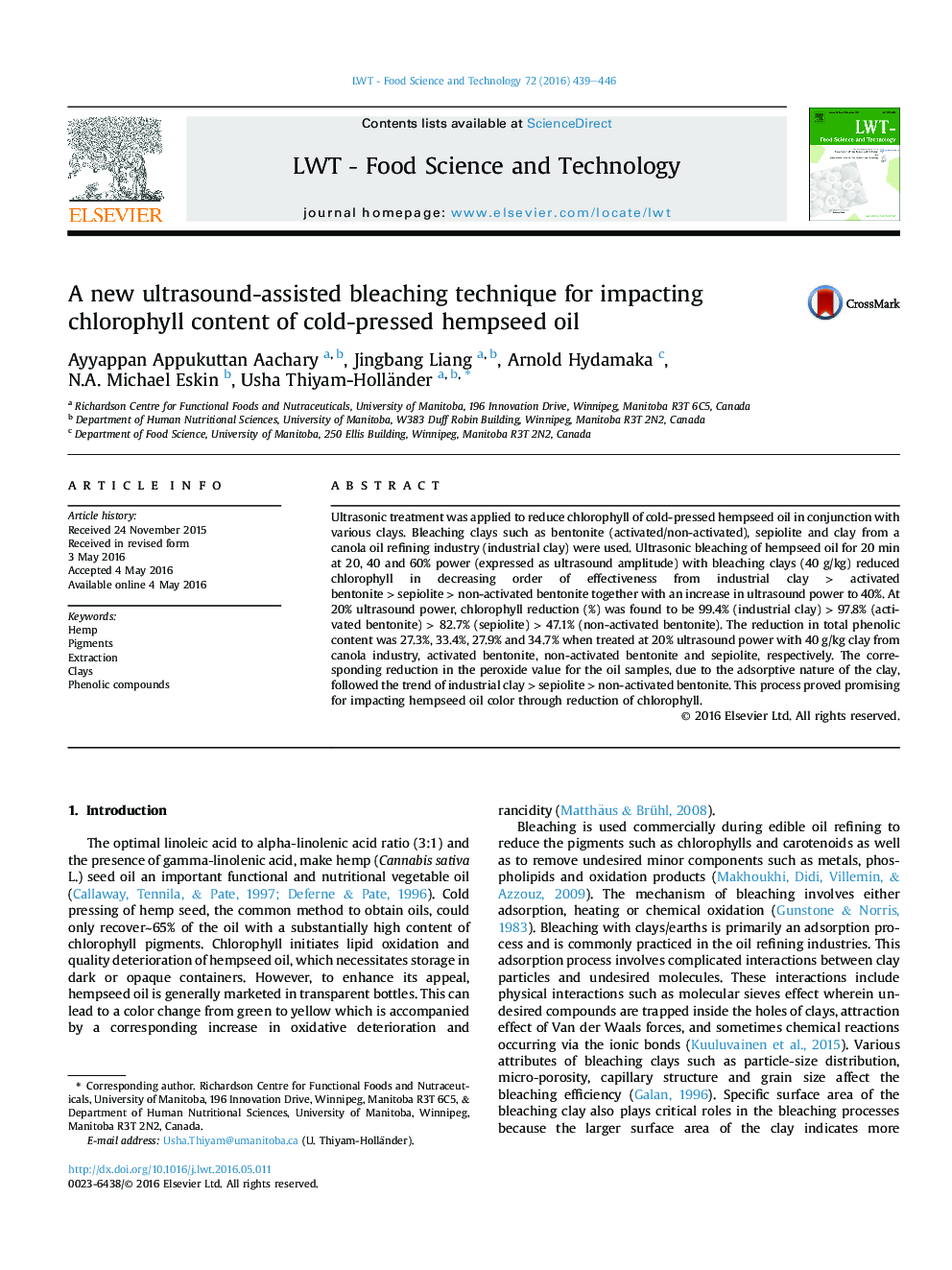| Article ID | Journal | Published Year | Pages | File Type |
|---|---|---|---|---|
| 4563303 | LWT - Food Science and Technology | 2016 | 8 Pages |
•Extraction of hempseed oil chlorophyll is most efficient with diethyl ether.•Significant reduction in hempseed chlorophyll upon ultrasonic bleaching with clays.•Ultrasonic bleaching with clays reduced total phenolic content and peroxide value.•Ultrasonic bleaching is a novel method to modify the color of hempseed oil.
Ultrasonic treatment was applied to reduce chlorophyll of cold-pressed hempseed oil in conjunction with various clays. Bleaching clays such as bentonite (activated/non-activated), sepiolite and clay from a canola oil refining industry (industrial clay) were used. Ultrasonic bleaching of hempseed oil for 20 min at 20, 40 and 60% power (expressed as ultrasound amplitude) with bleaching clays (40 g/kg) reduced chlorophyll in decreasing order of effectiveness from industrial clay > activated bentonite > sepiolite > non-activated bentonite together with an increase in ultrasound power to 40%. At 20% ultrasound power, chlorophyll reduction (%) was found to be 99.4% (industrial clay) > 97.8% (activated bentonite) > 82.7% (sepiolite) > 47.1% (non-activated bentonite). The reduction in total phenolic content was 27.3%, 33.4%, 27.9% and 34.7% when treated at 20% ultrasound power with 40 g/kg clay from canola industry, activated bentonite, non-activated bentonite and sepiolite, respectively. The corresponding reduction in the peroxide value for the oil samples, due to the adsorptive nature of the clay, followed the trend of industrial clay > sepiolite > non-activated bentonite. This process proved promising for impacting hempseed oil color through reduction of chlorophyll.
